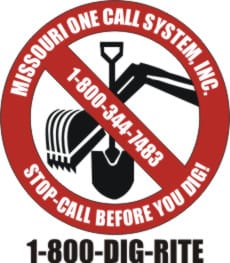System Care
Having Odor Problems?
Indoor Odors
While sewers, by nature, have an unpleasant odor, you shouldn’t be able to smell sewer odor in your home or business. Sewer odors inside could indicate a problem with the plumbing. Usually, the problem is easy to fix.
If you think the odor is coming from a drain, the trap may be dry. Adding 2–4 cups of water should re-seal the trap. If the odor lingers, try cleaning the drain. Pour 1 cup of baking soda and 1 cup of vinegar into the drain. Let it stand for about 30 minutes, then flush with hot water. Alternatively, you can also use a little bleach mixed with cold water.
Other possible sources of odors in the house may be leaky seal ring or dry toilet trap, a blocked vent on the roof and faulty or cracked pipes
Outdoor Odors
If you notice sewer odors outside, please call the office at 636-797-9900, and we will investigate
Care and Feeding of Collection Systems
The District has a comprehensive preventive maintenance program to minimize sewer overflows and to keep the wastewater flowing to the wastewater reclamation facility.
Gravity Sewer Maintenance
Cleaning the main lines
Cleaning the sewer lines involves using the sewer jet to propel water through all the main underground pipes in order to clear them of debris such as grease and grit. The District has both a preventative and emergency flushing program.
If there is a manhole on your property, please do not obstruct or cover the lid. The crew needs access to the manholes to carry out the cleaning of the underground pipes. When sewer stoppages occur, accessibility to a manhole is essential to minimizing potential damage.
Consider Keeping the Lid Down
If your home’s ventilation pipes are clogged or are not large enough, air forced through the sewer lines during jetting will vent through commodes or drains. The escape of the air may force some water out of your commode or drains. In order to prevent this from happening in your home, check your roof vent and make sure it is not clogged and get in the habit of keeping your commode lid down.
Refer to the website announcements on the homepage to see a list of subdivisions scheduled for jetting over the next few months >
Tree Root Removal
Tree roots enter sewer pipes through cracks, breaks and joints. Root masses inside collection system pipes can become matted with grease, toilet paper and other debris. Uncontrolled tree root growth can eventually fracture sewer pipes and cause extensive damage. Clay tile pipe that was commonly installed until the late 1970s is more easily penetrated and damaged by tree roots. Plastic PVC pipe is more resistant to root intrusion because it typically has fewer joints.
The District can remove roots from the collection system with a root saw. Root saws are usually circular metal attachments with sharp metal teeth connected to the sewer jet hose that rotate to grind and cut root masses.
You can help decrease the infiltration of roots into your private and District public lines by being aware of where you plant trees and other vegetation in your yard. Avoid areas where sewer lines are buried.
TV Inspection
In our ongoing effort to prevent blockages and back-ups as well as to protect the efficiency of our system, the District performs TV inspections on portions of its collection system.
Equipment with closed-circuit television and video recording equipment allows us to inspect the inside of the sewer pipes. A camera specifically built to fit inside the pipes sends a signal to the computer. A trained crew member controls the camera and watches the image on a high-tech computer monitor.
We use closed-circuit TV inspection to:
- Pinpoint the location of a sewer line blockage
- Find areas that need to be cleaned to prevent a blockage or back-up
- Identify pipe that needs to be replaced or repaired
- Inspect new pipe to make sure it is installed properly and according to specification
- Find illegal or improper sewer connections
Pressurized system maintenance
Proper use is key to proper operations
Unlike a more common gravity type system, the pressurized systems utilize small diameter pipes and pumps located at each property. These systems require that the homeowner take an active role in the care and maintenance of the system. Taking preventive action is the best way to protect the pipes and mechanical equipment by being careful of what goes down the drains in your property.


